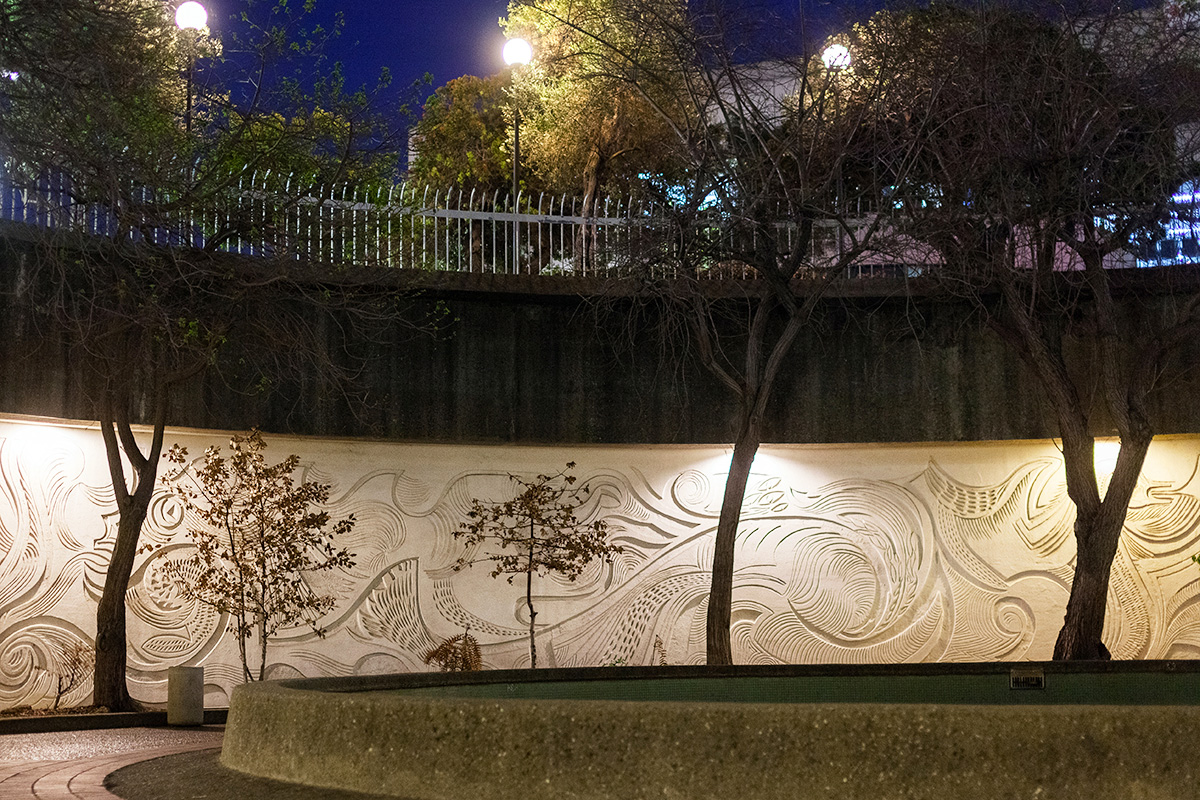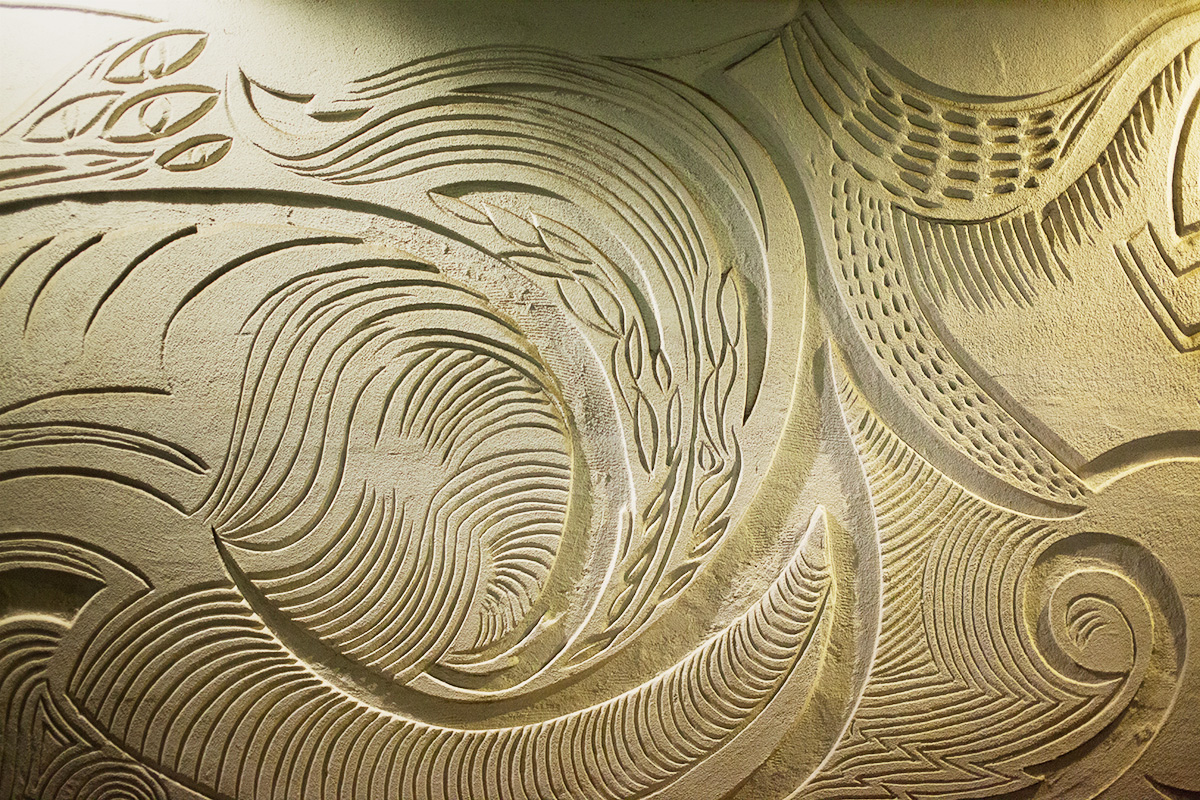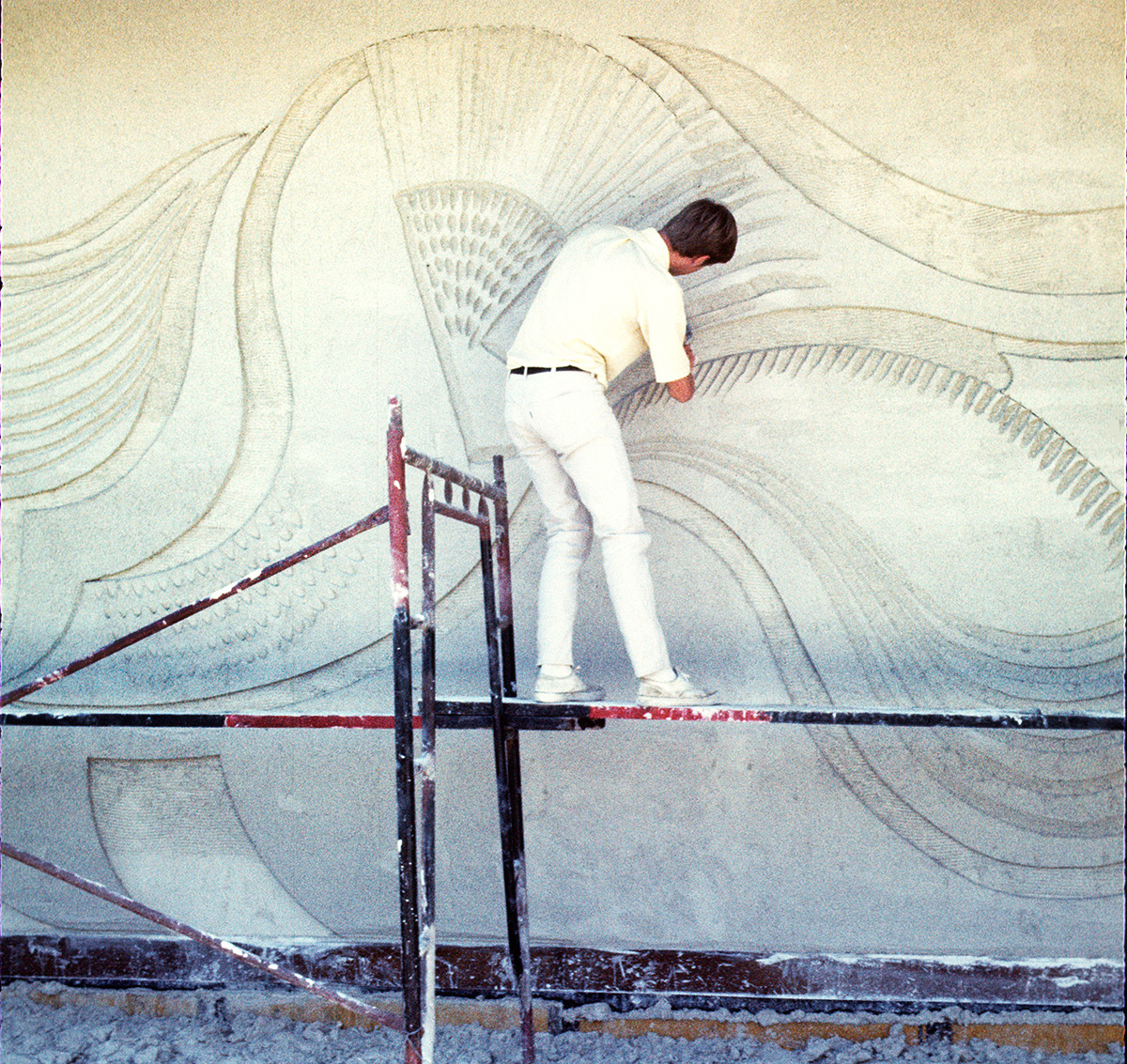How BART Got Art - Page 4
 |
 |
 |
|
birds and sea life at the Lake Merritt station. Top and center: Those same Lake Merritt reliefs in finished form. |
|
|
|
|
It doesn't appear the committee selected the artists or the specific artworks. Here's how George Homsey, one of the associate architects in Joe Esherick Associates, recalls deciding to create an abstract mural on a concrete wall in Orinda. "[Artist] Win Ng looked at it and said, 'Let's do this,' and I said OK."
Helen Webber was very much the kind of artist BART was after. "What I focus on is art and environment," she says, adding, "I have always been a socially oriented, socially committed kind of person, and I believe art should be part of a community and should express something people can relate to."
She designed three standing columns decorated with mosaics in Lafayette, and large banners for BART headquarters adjacent to Lake Merritt station. She got the job by presenting her work to Tallie Maule, and to Joe Esherick.
It had already been decided that art at Lafayette would be three columns. The only committee Webber had to deal with was of locals from Lafayette, one of whom objected to her use of purple because it was the color of Peoples Park in Berkeley. She switched to blue. Webber, who went on to create hundreds or more public artworks, designed a mockup using colored paper.
The mosaics were executed in Mexico by Alfonso Pardiñas, owner of the San Francisco firm Byzantine Mosaics. "I didn't go to Mexico," Webber says. "I said 'Goodbye, good luck,' and what he did was beautiful."
Pardiñas, both as a designer of his own work and mosaicist for designs by others, was probably the most prolific of all the first-generation BART artists, creating work in at least six stations.
Much of Lake Merritt is sheathed in Byzantine Mosaics tile work. Walls throughout the station are bathed in chunky tile in rough reds, off-whites, and blacks, with immense black tile circles, red arrows in tile.
Besides executing mosaics for work designed by artists Jean Varda in the Union City station and Mark Adams at MacArthur, Pardiñas designed two lovely, flowing tile murals for both El Cerrito stations and did his own tile work in Union City.
"A mad guy, very creative," as Webber recalls, Pardiñas was an "absolute character, very arty, very original, very '60s." Nowhere within the BART system does Pardiñas get a credit for his artwork.
Challenging Pardiñas for most productive BART artist is William Mitchell, a British artist who clearly wins as most versatile.




